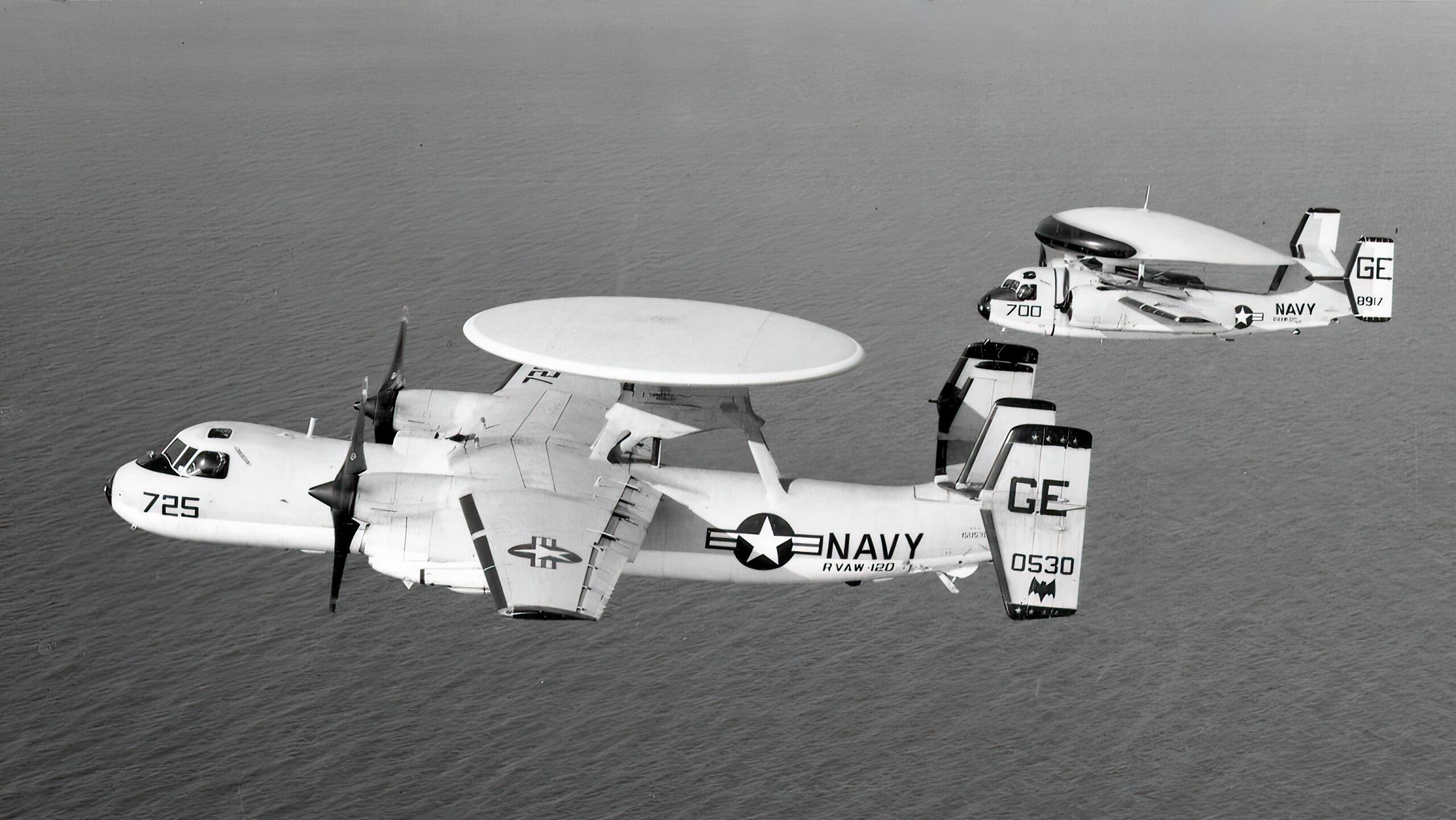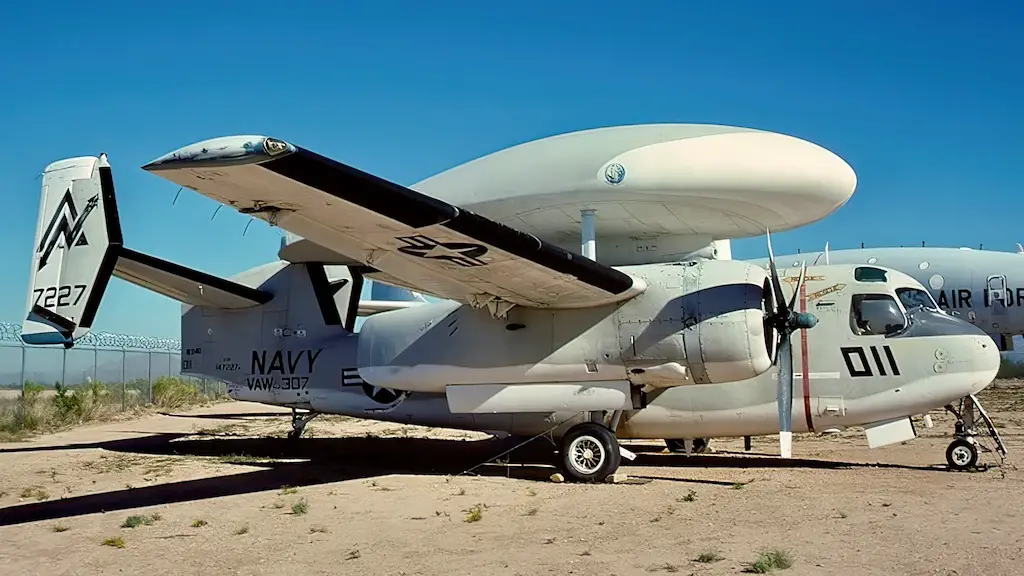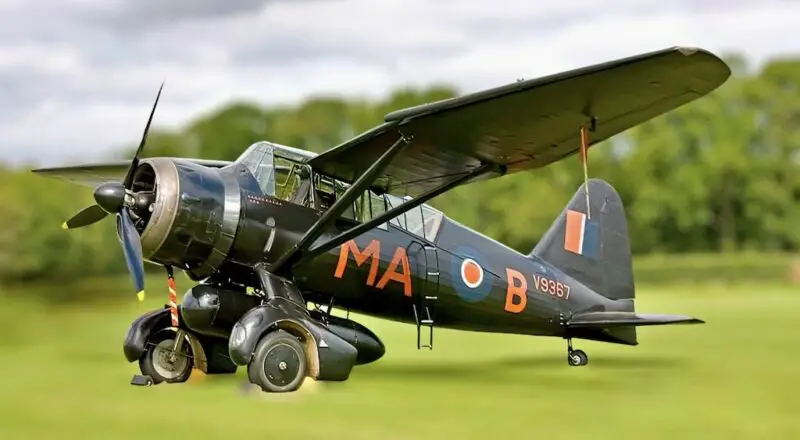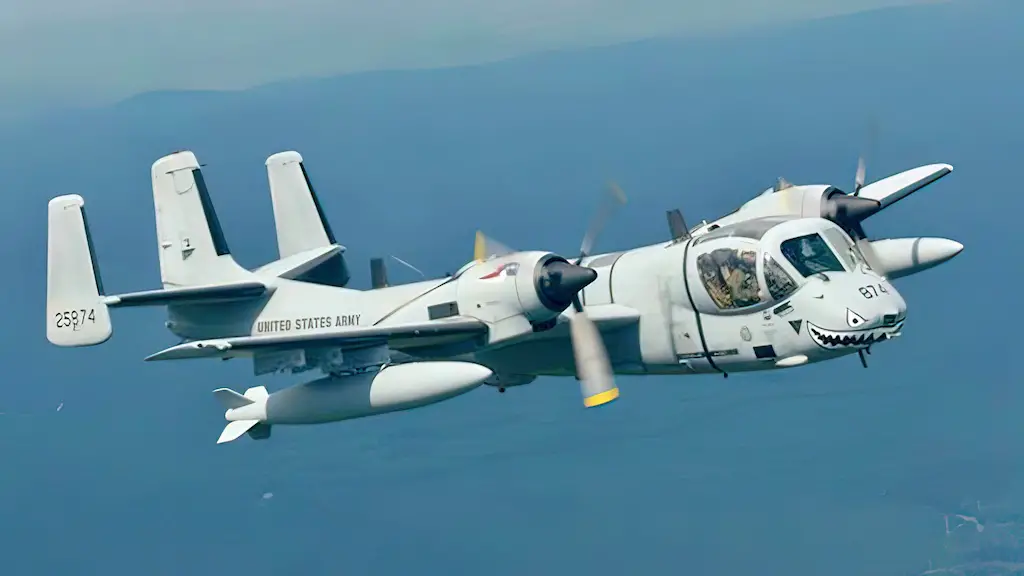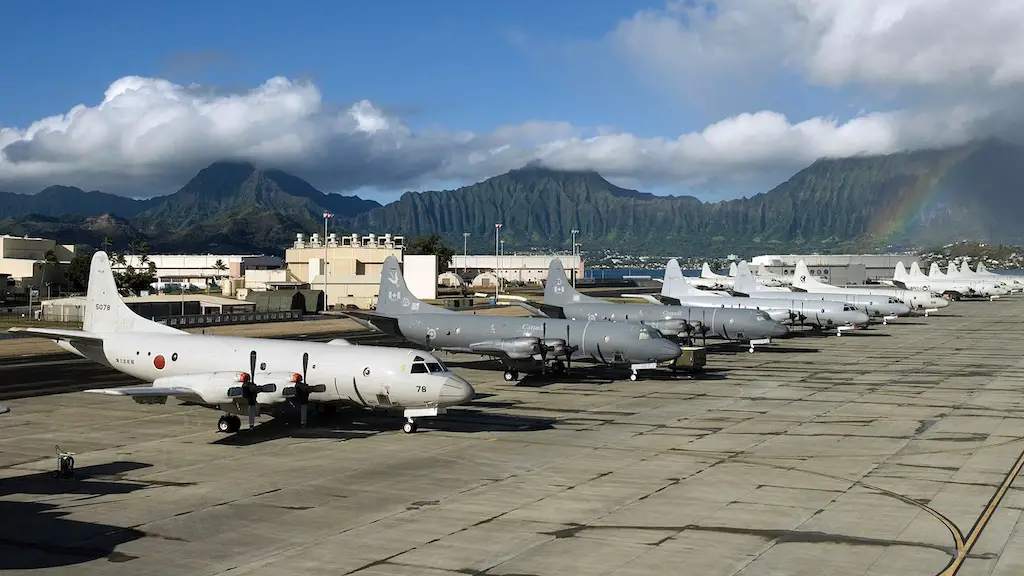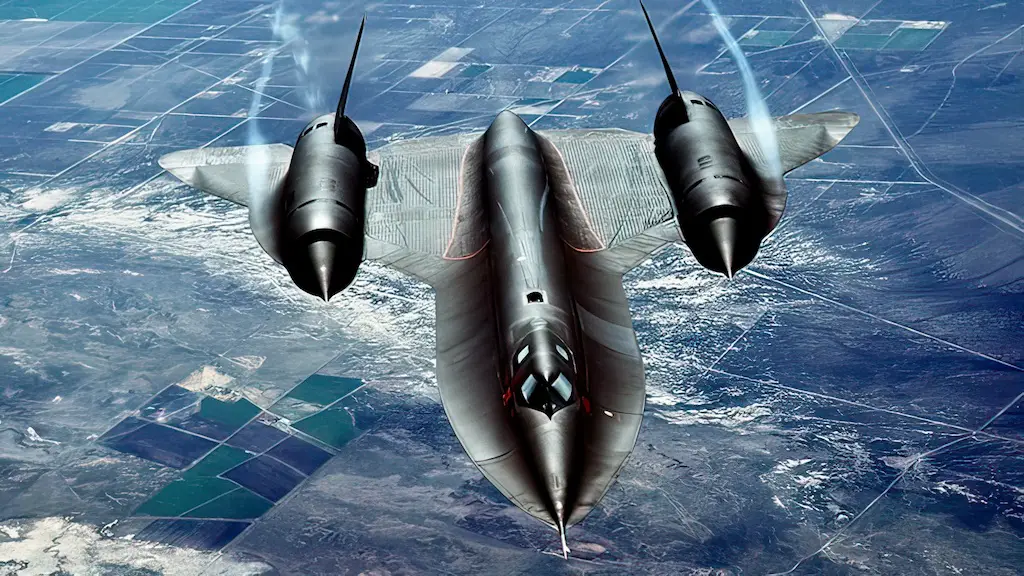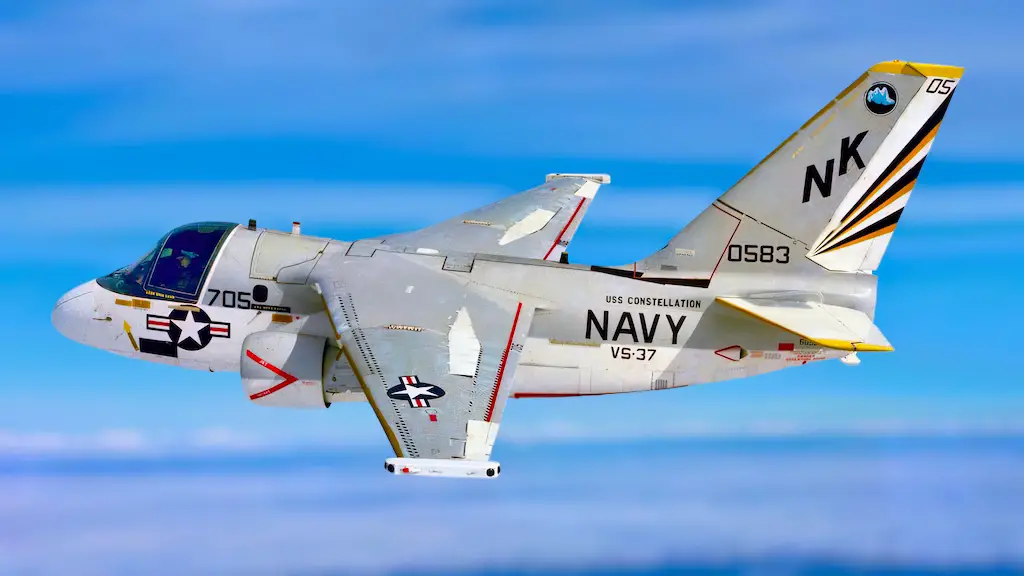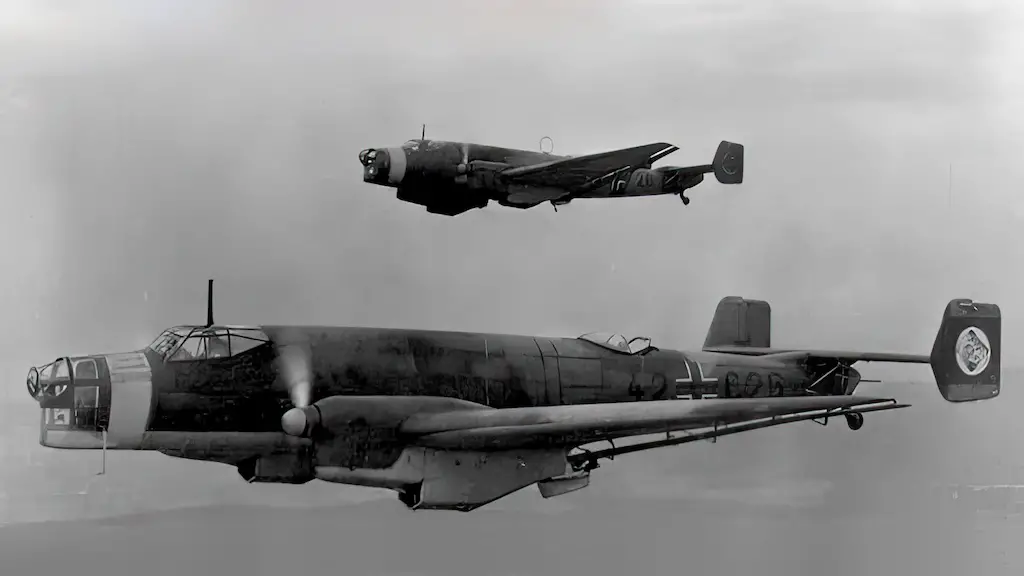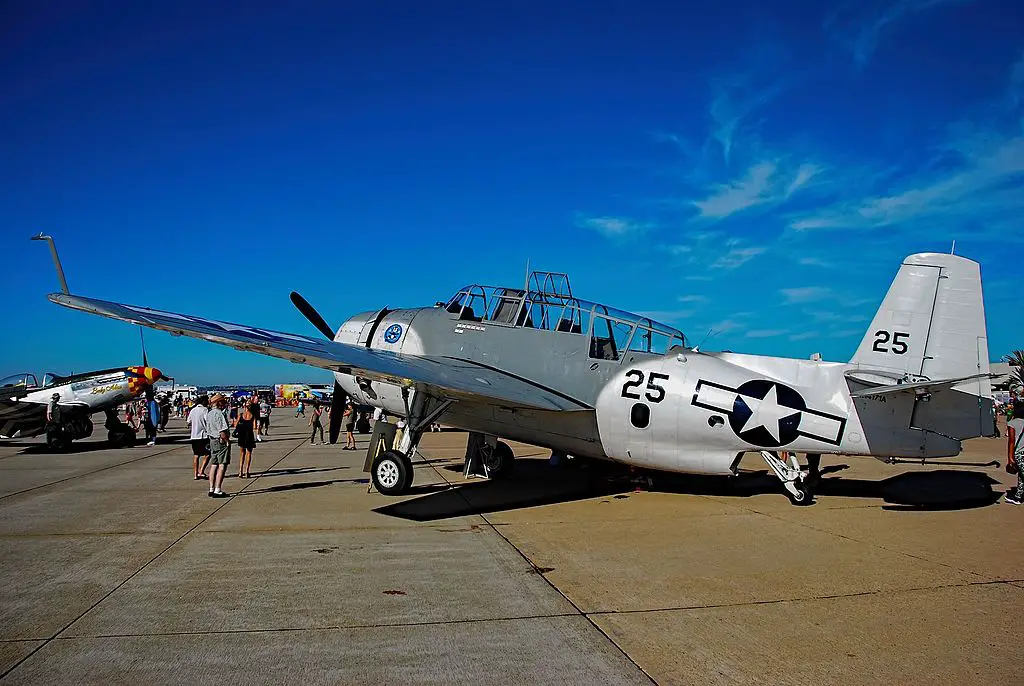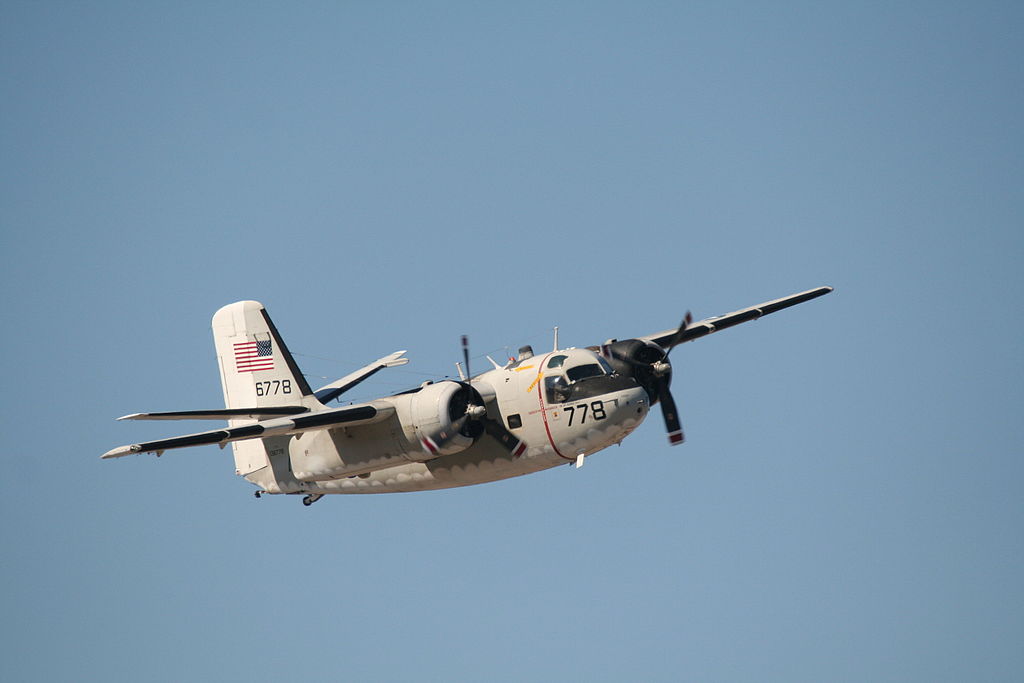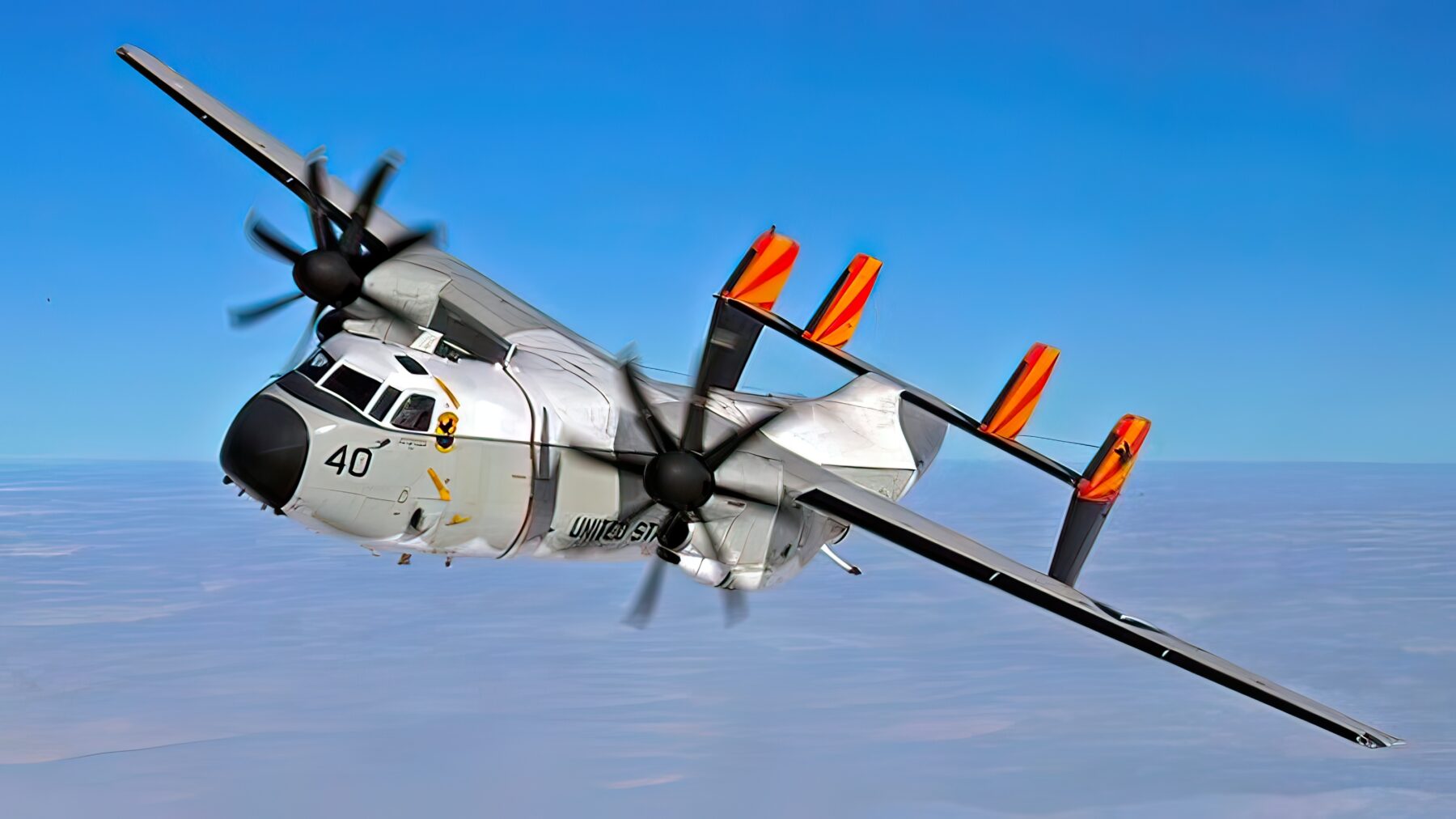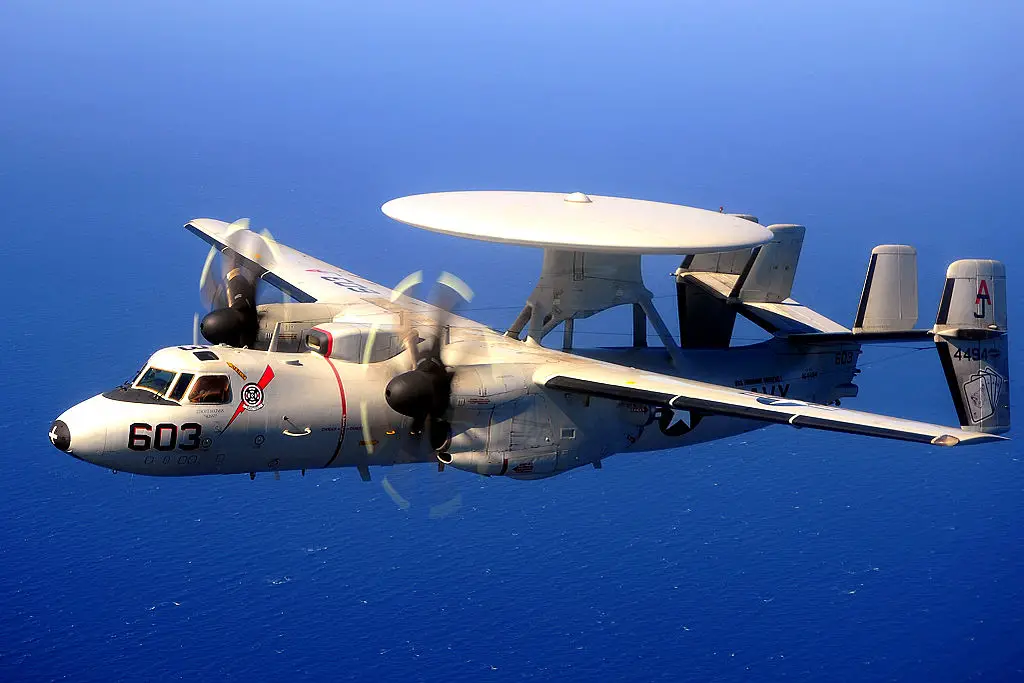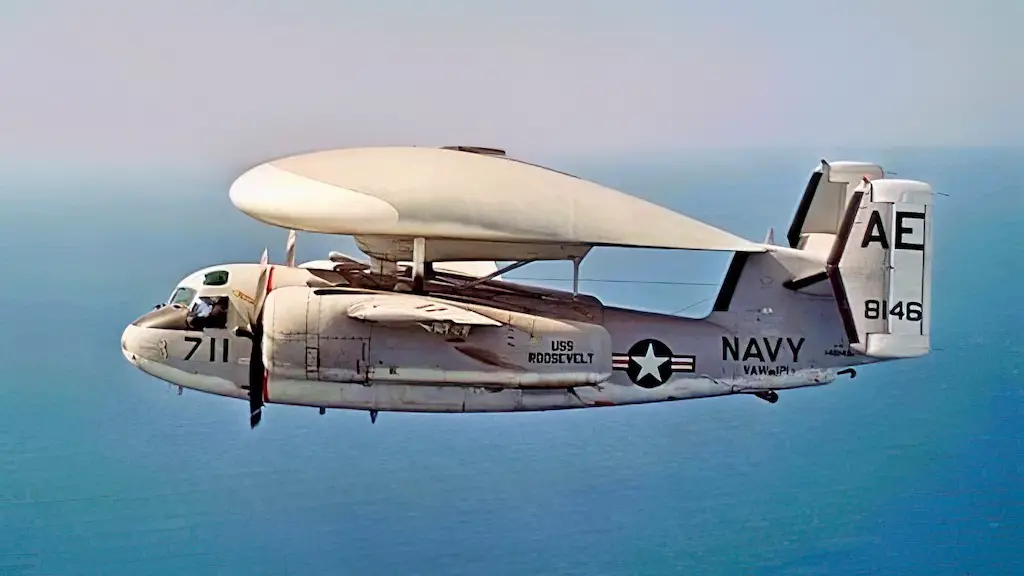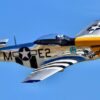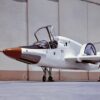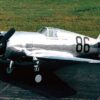Following the success of early experiments into installing large radars on various existing aircraft, such as the TBM-3 Avenger, the United States Navy ordered a dedicated aircraft for the task. The Grumman E-1 Tracer became the first purpose-built airborne early warning (AEW) platform adopted by the Navy. The primary duty of this aircraft armed with a large over-fuselage radome shaped like a tortoise shell was to detect enemy aircraft formations while still dozens of miles away, timely alerting the aircraft carrier and its air wing to the danger.
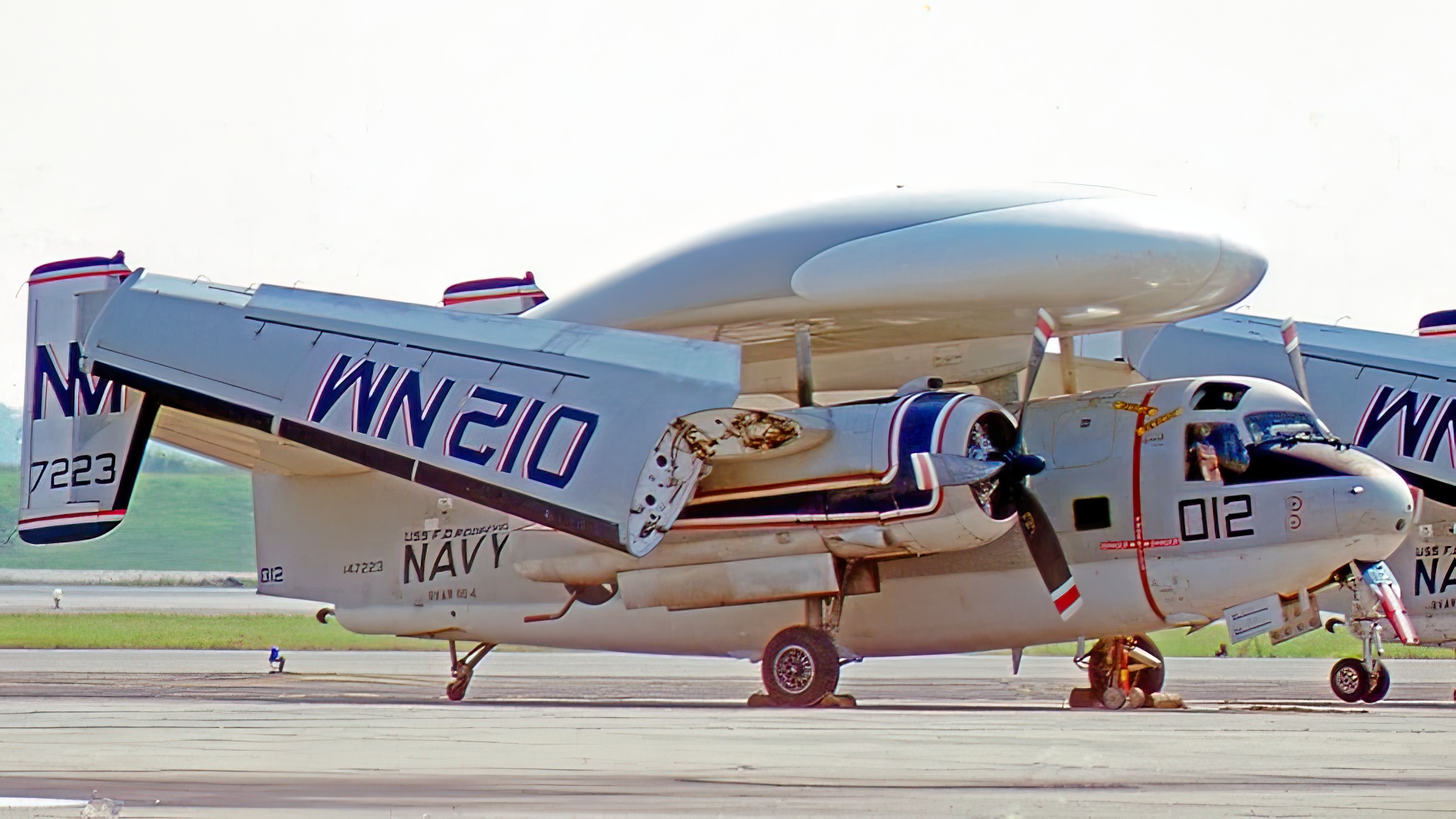
Family ties
The E-1 was a derivative of the Grumman C-1 Trader, a transport aircraft whose main function was flying carrier onboard delivery (COD) missions, that is flying in supplies, mail and personnel to and from carriers at sea. The Trader, in its turn, was a derivative of the Grumman S-2 Tracker, the Navy’s first purpose-built anti-submarine warfare (ASW) aircraft.
By the 1970s the E-1’s place was taken over by the Grumman E-2 Hawkeye. This aircraft also later became the basis for the Grumman C-2 Greyhound cargo aircraft. Thus, in the first case an AEW aircraft was developed from a COD aircraft, and in the second case vice versa.
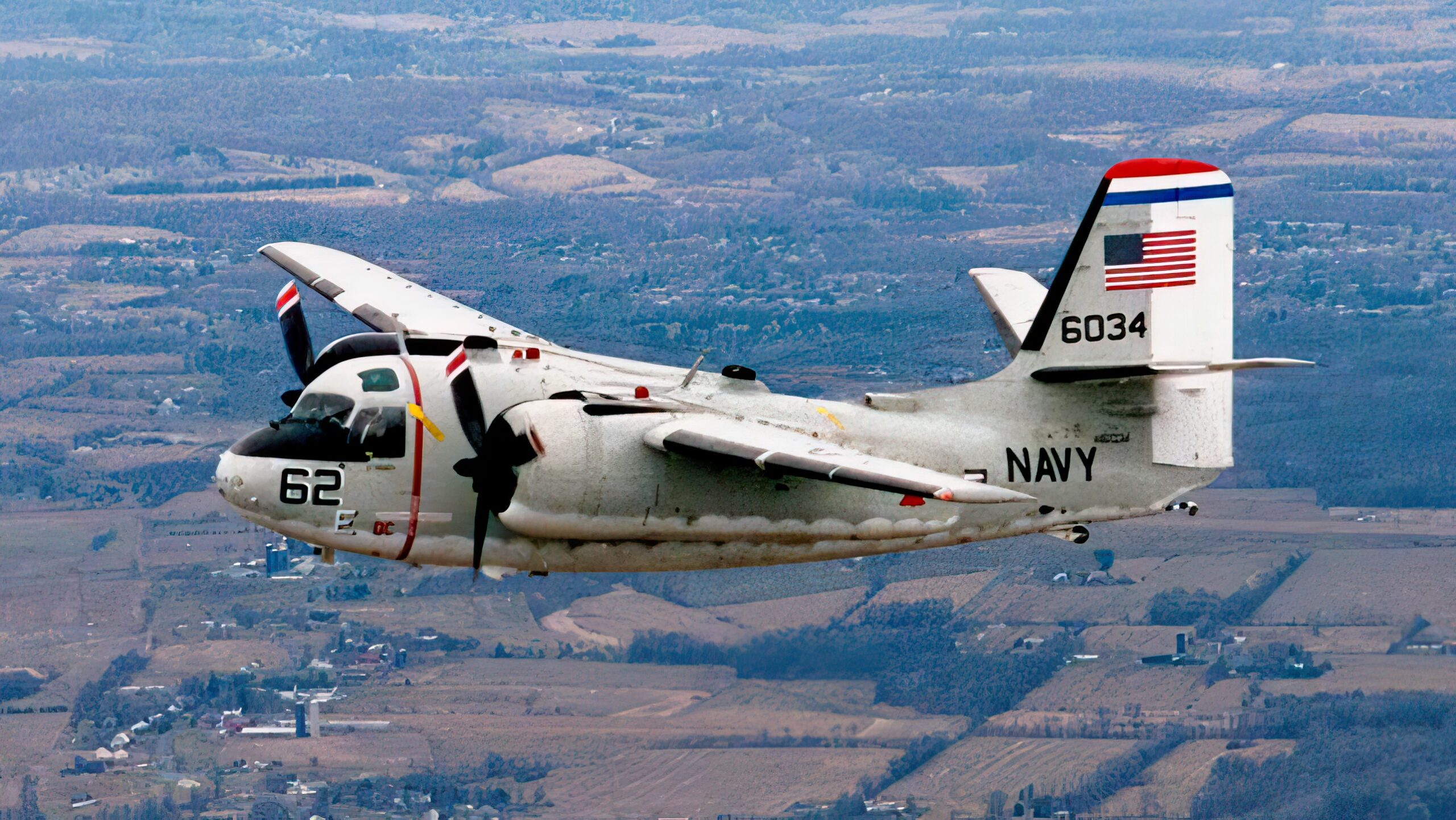
Changing names
At the time of the Tracer’s introduction the Tri-service aircraft designation system hadn’t arrived yet and the aircraft spent its first years in service under the WF-2 designation, hence its nickname, “Willy Fudd.” In 1962 the aircraft was redesignated as E-1, but the nickname stuck. The plane also had another monicker, “Stoof with a Roof,” a reference to its predecessor S-2, nicknamed “Stoof,” and the E-1’s huge radome.
Adapting the airframe to flying under umbrella
Of course, the E-1’s key element was its surveillance radar, the APS-82. It was placed inside a large, strut-mounted radome, which some likened to a turtle shell, some to an umbrella, and some to a roof. Operating all the complex radar equipment requires extra personnel on board, which is why Tracers were manned by crews of four.
The huge, fixed radome on top of the fuselage determined some specific traits distinguishing the E-1 from its relatives, the C-1 and the S-2. In particular, the E-1 featured an unusual folding wing mechanism that folded its wings not upward, as it was the case with most aircraft, including, the Trader and the Tracker, but backward, along the sides of the aft fuselage. Another difference was the E-1’s twin-fin tail unit. With the wings folded rearward the aircraft tended to be tail-heavy, so it was also equipped with a steerable tail wheel for maneuvering around the deck.
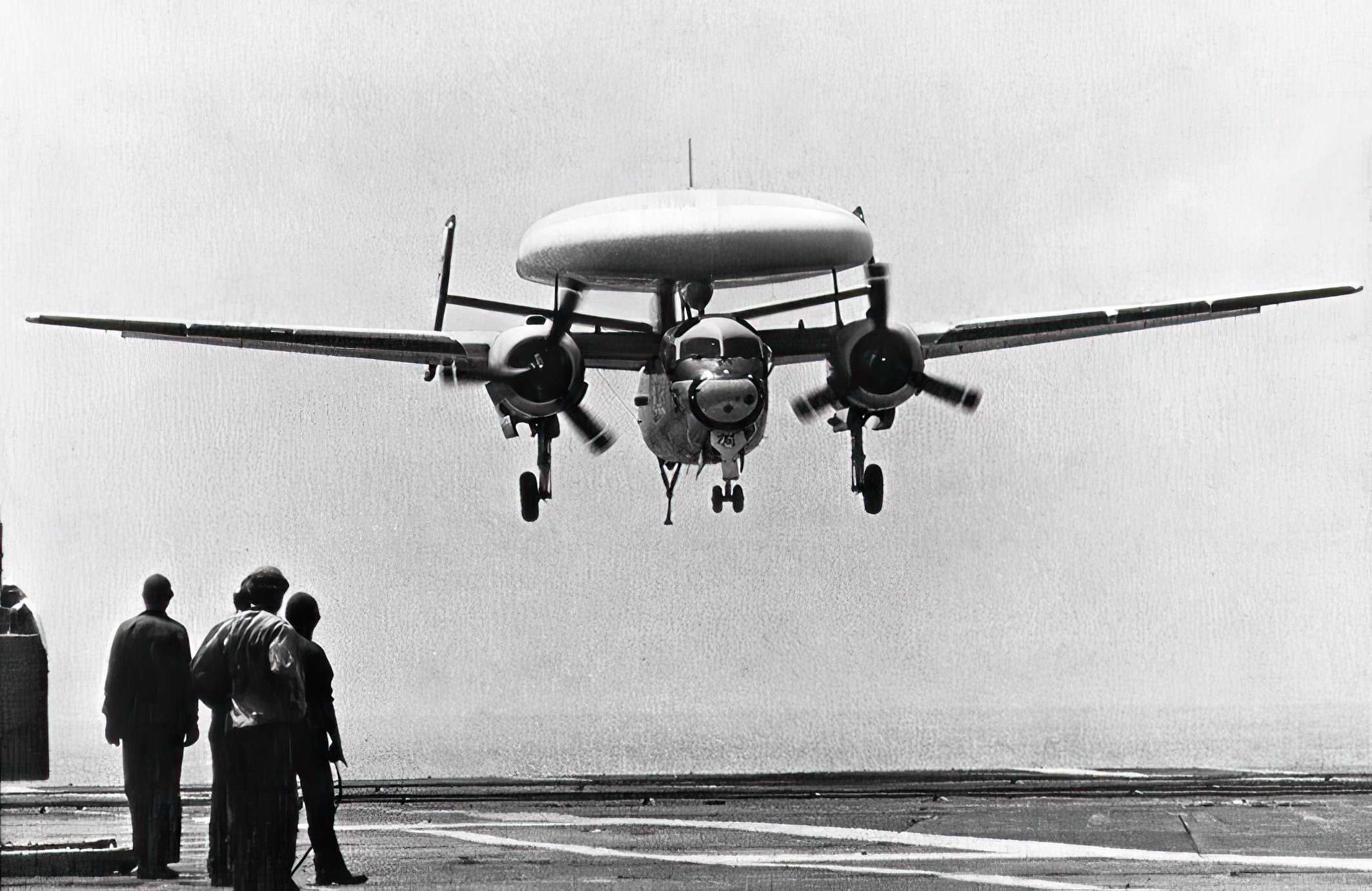
A slow sentry
Even though the radome fairing was given an optimized extended shape, it still created an enormous amount of drag. Naturally, that affected the aircraft’s performance: the E-1 had a cruising speed of just 162 mph and a top speed of 238 mph. It’s worth noting that the aircraft was still powered by piston engines, a pair of 1,525-hp Wright R-1820-82A Cyclones. In comparison, its successor, the E-2 Hawkeye, had a pair of Allison T56 turboprops, producing 5,100 shp each, and cruised at 357 mph.
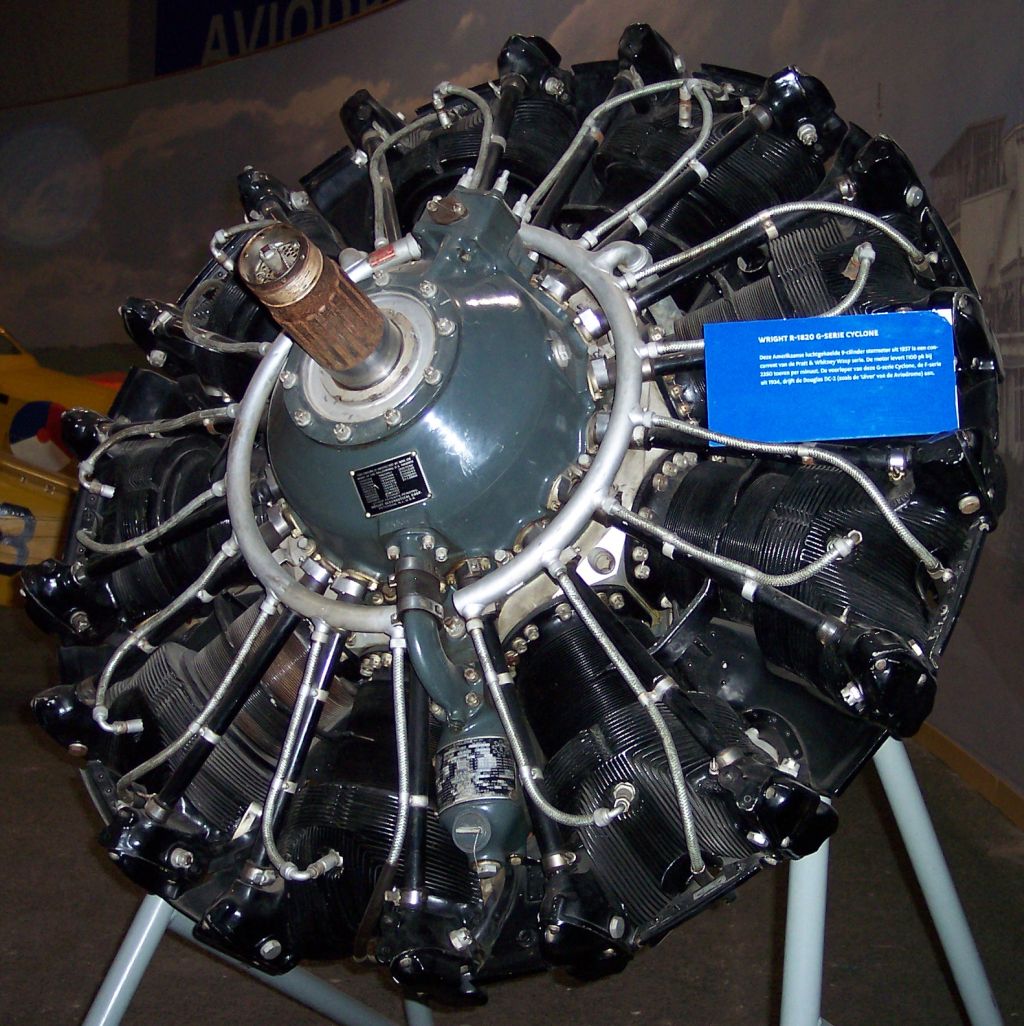
An action-packed, over decade-long service
The Tracer first flew in December 1956, and was fully introduced into service in 1960. All in all, Grumman built 88 E-1B Tracers with the production run ending in September 1961. Although the E-2 Hawkeye was introduced in the mid-1960s, the E-1B went on flying for another several years and was mostly retired from service by 1973, with some airframes flying up until 1977.
The Tracer even took an active part in the Vietnam War, teaming up with combat air patrol (CAP) fighters, controlling strikes on North Vietnam, and warning US attack aircraft of approaching MiG fighters. Tracer-equipped carrier airborne early warning squadrons logged a total of 56 deployments in support of operations in the region.
